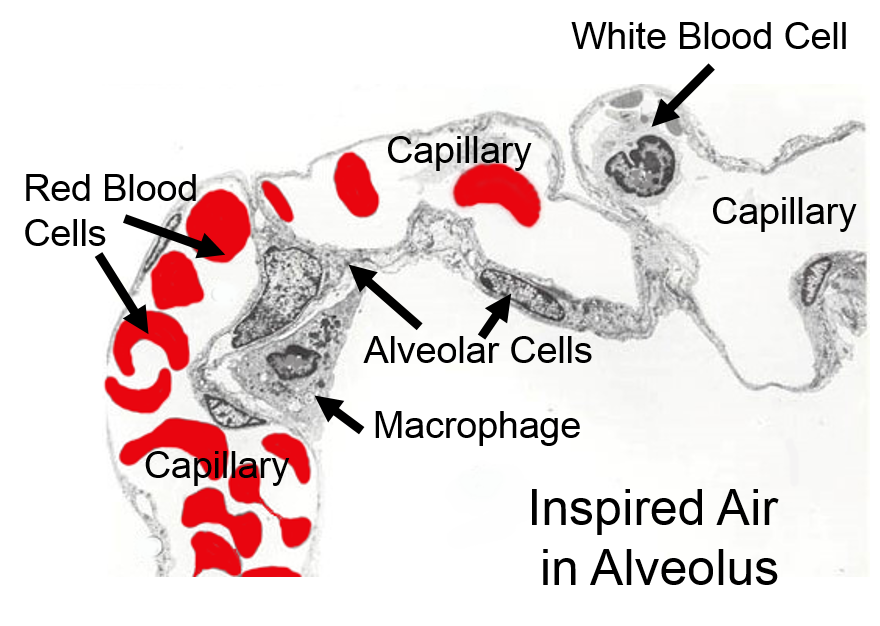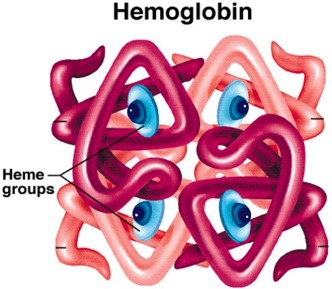Eventually, the terminal bronchioles open into thousands of alveoli (singular is alveolus) - the delicate, grape-like clusters of air sacs where gas exchange occurs. There are several types of alveolar cells: type 1 and type 2 alveolar cells and alveolar macrophages.

Adapted from http://http://yale.edu/imaging/anatomy/bronchioles/index.html

The figure above on the left shows a bronchiole terminating in several alveoli. Notice that the bronchiole has a vascular supply (oxygenated blood in red and deoxygenated blood in blue), and it also has nervous enervation (nerves shown in yellow), and the bronchiole is wrapped by smooth muscle cells that can contract or relax in response to physiologic conditions. Contraction of smooth muscle narrows the airways, and relaxation increases their diameter. The function of this smooth muscles is of central importance to asthmatic attacks.
The figure above on the right focuses on the details in part of a single alveolus, as shown by a modified electron micrograph. Note that the alveoli and their surrounding capillaries are in very intimate contact, which facilitates the exchange of oxygen and carbon dioxide between the air in the alveolus and the blood in the capillary. The alveolus is lined with alveolar cells; type 1 alveolar cells are just for exchange of oxygen and carbon dioxide, while type 2 alveolar cells can divide to give rise to new type 1 cells, and they can also synthesize and secrete a substance called surfactant, which reduces surface tension in the alveolus and prevents collapse during expiration. Within the alveolus there are also macrophages - phagocytic cells that engulf particulate matter and then migrate up the bronchioles where ciliated cells sweep them up to the pharynx where they can be swallowed or expectorated. Alveolar macrophages are sometimes referred to as "dust cells."
Vertebrates has specialized cells that facilitate the delivery of oxygen to tissues.Red blood cells (RBCs) contain molecules of hemoglobin, a protein with 4 subunits, each of which has a "heme" binding site that can reversibly bind oxygen.

